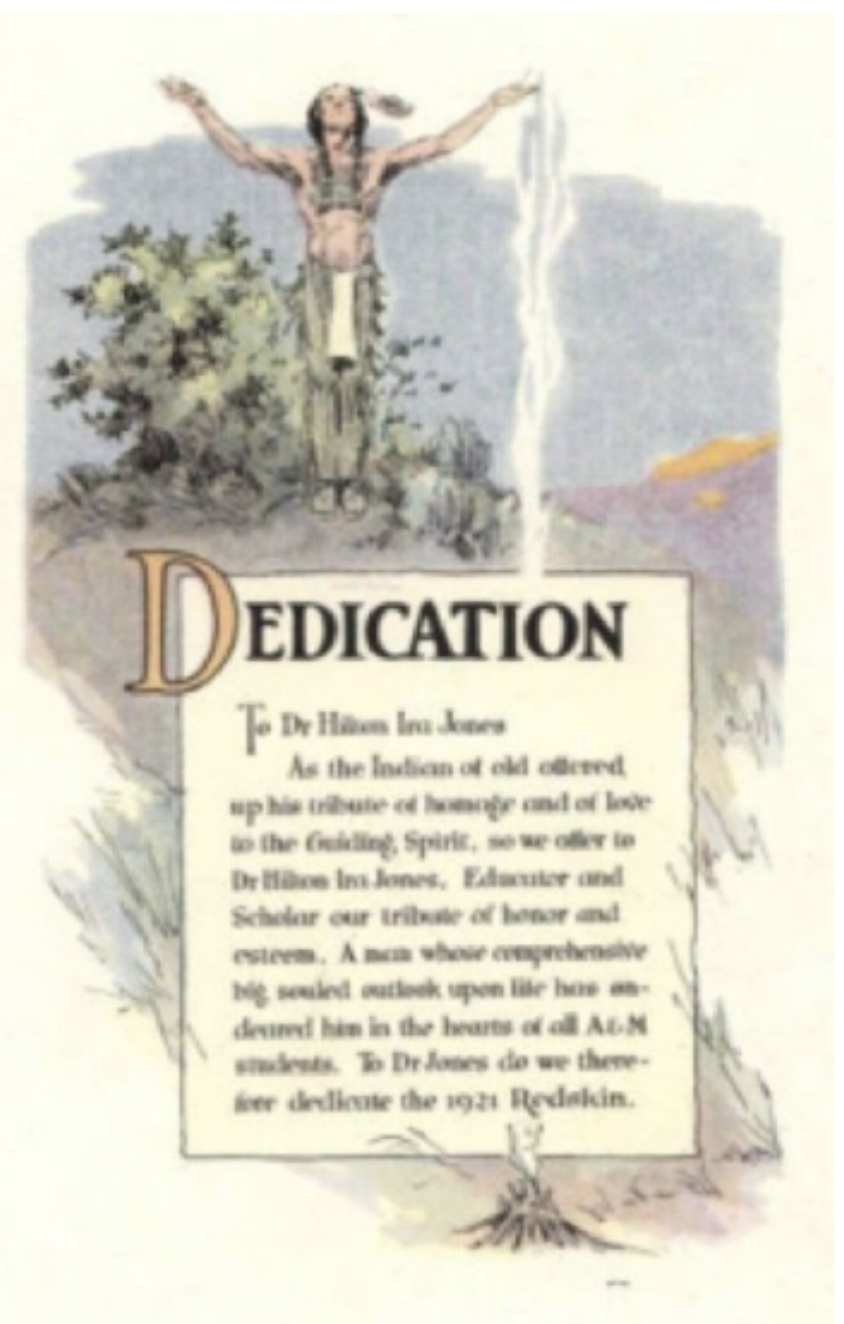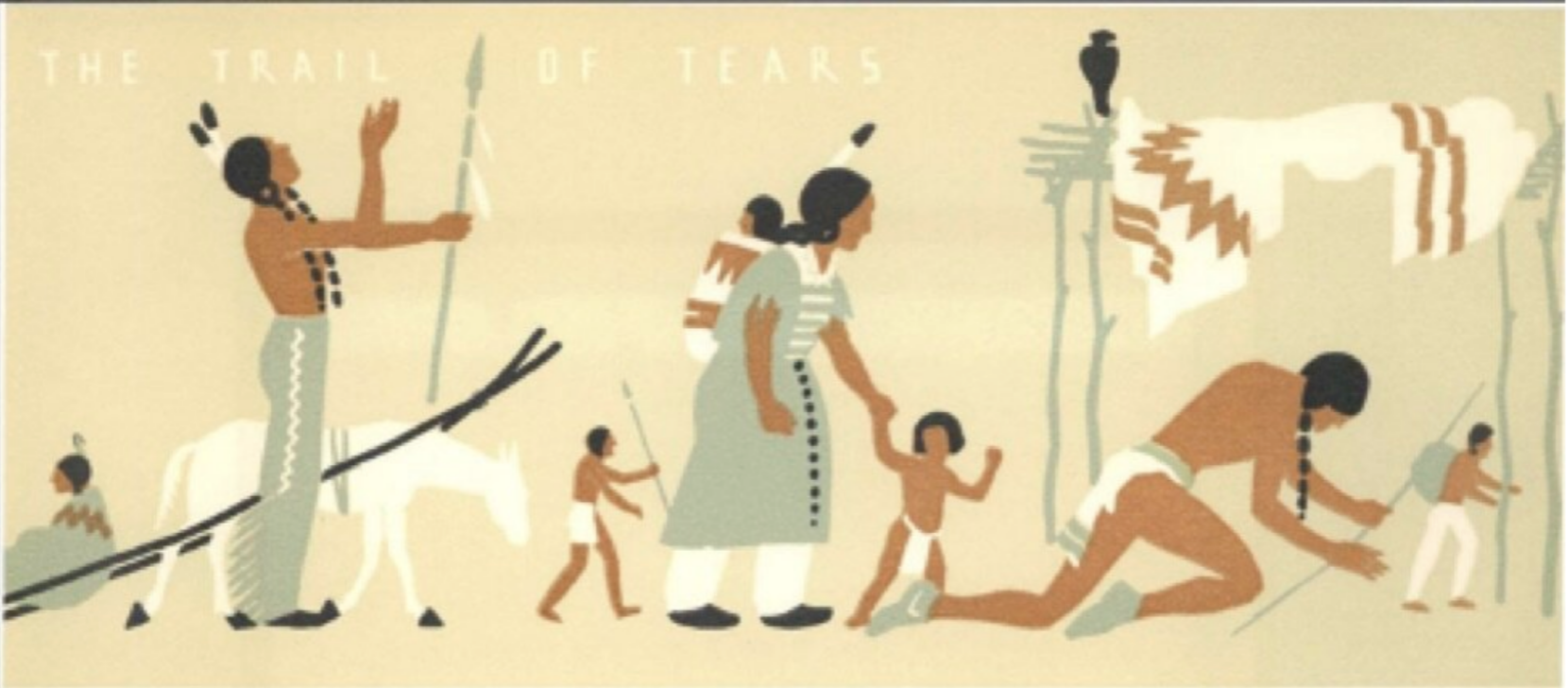
OSU R*DSKIN YEARBOOKS
For eighty years, Oklahoma State University published a yearbook series under the name, “The Redskin.” While recording decades of student life, the yearbooks also depict years of insensitivity concerning ethnic and racial identities including slang, stereotypes, and appropriation. Over the years, indigenous themes and symbols became less and less frequent, although ethnic and culturally insensitive portrayals continued to be extremely problematic. A benefit of the yearbooks was that they also shed light on indigenous people’s activity in the region over the span of time the yearbooks were printed.
Use as a theme and story
A feature of many of the early yearbooks was the use of indigenous arts and experiences as a theme for the yearbooks. Note this ranges from pots and patterns on the pages to dedications created around stereotypical language. Equally problematic are a series of conquest themes emphasizing progress and indigenous people as a disappearing race.







“Playing Indian”
The practice of “Playing Indian” is found in many facets of life. At OSU, attempts to boost yearbook sales and athletics often perpetuated this practice. While student antics and inside jokes have over time lost their meaning, their hurtful and demeaning images remain.
Corresponding resources: Philip J. Deloria’s Playing Indian (1998) and Shari M. Huhndorf’s Going Native (2001)
1907 is the key year, the pivot of all of the narratives, at the height of baseball fever - the nine-game series for the Twin Territories championship. Pitted against each other are the Native American Miko Kings - the winners of the Indian Territory League - and their arch-rivals, the Seventh Cavalrymen from Fort Sill - winners of the Oklahoma Territory League. Indians vs. Soldiers, an epic battle that involved baseball. And much more.
Representation—Good or Bad?
Indigenous people attended and participated in OSU activities throughout the twentieth century. How their contributions were represented varied.
Later Years And Other Problematic Representations
The Oklahoma State University Redskin Yearbook allowed students to look back at the year’s highlights, whether personal or campus-wide. However, as the decades and society continued to progress, many of the depictions and images within the yearbook began to be seen in a new light. Actions such as consuming alcohol on campus grounds, fraternities demonstrating their “traditions” or seemingly benign racially-insensitive actions have taken on a new light within the larger society presently.
The OSU R*dskin Yearbook was discontinued in 1991 due to decreasing involvement and a lack of desire for continued publication. While its contents can be problematic and at times offensive, the R*dskin Yearbook and its digitized collection serve to document and preserve Oklahoma State’s long and complicated history.


















